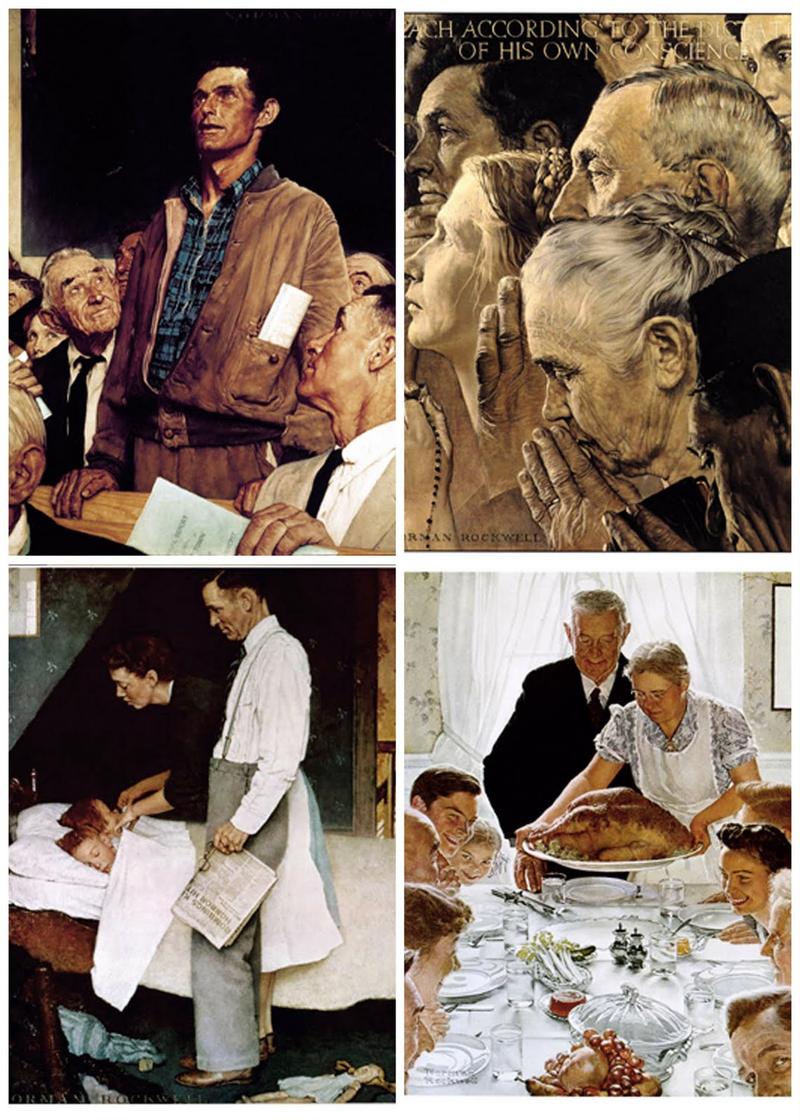Norman Rockwell
by admin - October 19th, 2017
By Jenna Goodreau
In the words of Dunar in his book America in the Fifties, “Beyond a doubt, Norman Rockwell was America’s most recognizable artist in the fifties” (Dunar 258). Rockwell’s artistry began at a young age, when he was 14 years old he began attending school at the Chase Art School, rather than attending regular high school. Later, he went on to study at the National Academy of Design and at the Art Students League of New York. In his later teenage years, Rockwell was given the job of art director of Boy’s Life, which is the publication for the Boy Scouts of America.
When Rockwell turned 21, him and Clyde Forsythe, a cartoonist, started a studio together. During this time, he had artwork featured in magazines such as Country Gentlemen, Life, and Literary Digest. Soon after, he produced his first cover for The Saturday Evening Post and the Post featured his work on the cover 321 times over the course of the next 47 years. Rockwell also painted portraits of four of the United States presidents, Eisenhower, Nixon, Kennedy and Johnson. He made illustrations for a number of books, the most popular including Tom Sawyer and Huckleberry Finn. Other illustrations by Rockwell were used on stamps, advertisements (including Coca-Cola),catalogs, playing cards and posters.

The “Four Freedoms” paintings. Top (L to R): Freedom of Speech, Freedom to Worship. Bottom (L to R): Freedom from Want, Freedom from Fear
As Dunar mentioned, Rockwell sometimes did paintings and illustrations about racial and gender stereotypes. He did a painting called, The Problem We All Live With that showed “Ruby Bridges, flanked by white federal marshals, walking to school past a wall defaced by racist graffiti” (Wiki). When Ruby Bridges went the White House in 2011 to meet President Obama, the painting was on display. Another racial piece that Rockwell did was called New Kids in the Neighborhood, and it showed white children socializing with black children that were moving into their suburb, yet the white parents were just watching from behind their curtains. Pieces like these two that have deep meaning behind them seemed to be among his most popular.
Later in his life, Rockwell released an autobiography titled My Adventures as an Illustrator. At the beginning of his career, Rockwell was “dismissed by serious art critics” because “many of his works appear overly sweet” and “tend toward idealistic or sentimentalized portrayals of American life” (Wiki). But, once he began to release some more serious pieces of work his career really took off and he has had a huge impact on the art world. To learn more about Rockwell and view some of his work, click here.
References
Dunar, Andrew J. America in the Fifties. Syracuse University Press, 2006.
“Norman Rockwell.” Wikipedia, Wikimedia Foundation, 15 Oct. 2017, en.wikipedia.org/w/index.php?title=Norman_Rockwell&oldid=805385642.
“The Home for American Illustration.” Norman Rockwell Museum, www.nrm.org/.
“Norman Rockwell.” Biography.com, A&E Networks Television, 28 Apr. 2017, www.biography.com/people/norman-rockwell-37249.